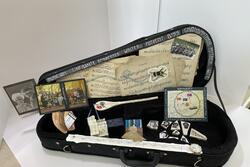Hannah as a Precedent-Setter
Painting in the Rijksmuseum Amsterdam, image courtesy of Wikimedia.
On the first day of Rosh Hashana last week, I listened to a congregant at my synagogue chant Haftorah, the additional reading from Jewish scriptures that follows the reading of the Torah on Shabbat and holidays. This particular Haftorah continues to hold great relevance and importance for Jews today, and particularly for Jewish women. It tells the story of Hannah and her desire to bear a child. In the story, we learn that Hannah and Peninah are both the wives of a man named Elkanah. Peninah goads Hannah because Hannah, like many of the Jewish matriarchs, is barren. Over the course of the Haftorah, Hannah prays to God, interacts with a priest named Eli, and is told that she will come to bear a son, Samuel.
There are a lot of things about this story that rub my feminist consciousness the wrong way: Hannah is described first as the wife of Eli and later as the mother of Samuel, as though she is not worthy of notice as a biblical character in her own right; the priest Eli approaches the praying Hannah with the statement, “How long will you make a drunken spectacle of yourself”; when Hannah’s infertility is lifted by God, the rabbis explain that each person must be tested according to his/her ability to withstand suffering.
But we learn something from Hannah, too, something that lines her up with Ray Frank as a precedent-setting Jewish woman. (Check out Leah’s recent blog post for more on Ray Frank!) When Hannah prays for a child, she moves her lips without even a whisper. She is educated in Jewish practice, too; one midrash tells that Hannah used the rules of the Torah in her attempt to negotiate with God for a child. Tamar Kadari’s article on Hannah in Jewish Women: A Comprehensive Historical Encyclopedia tells us more about this prayer: “The prayer of Hannah was unique among prayers, since it was answered without being heard.” Hannah prayed standing up, moving only her lips, and using her heart. As a result, Jewish people pray the Amidah, the primary element of Jewish daily prayer, standing, silently (though we mouth the words), and with intent. It is from Hannah that Jews learn to practice one of the most important of Jewish prayers.
While the entire story of Hannah is filled with rich (and sometimes contradictory) interpretations, it is this view of Hannah as precedent-setter and Jewishly-literate woman that I remembered when I heard this Haftorah last Thursday morning. (Now, if only a woman had been chanting!)
For more on the story of Hannah, Jewish Women: A Comprehensive Historical Encyclopedia.






